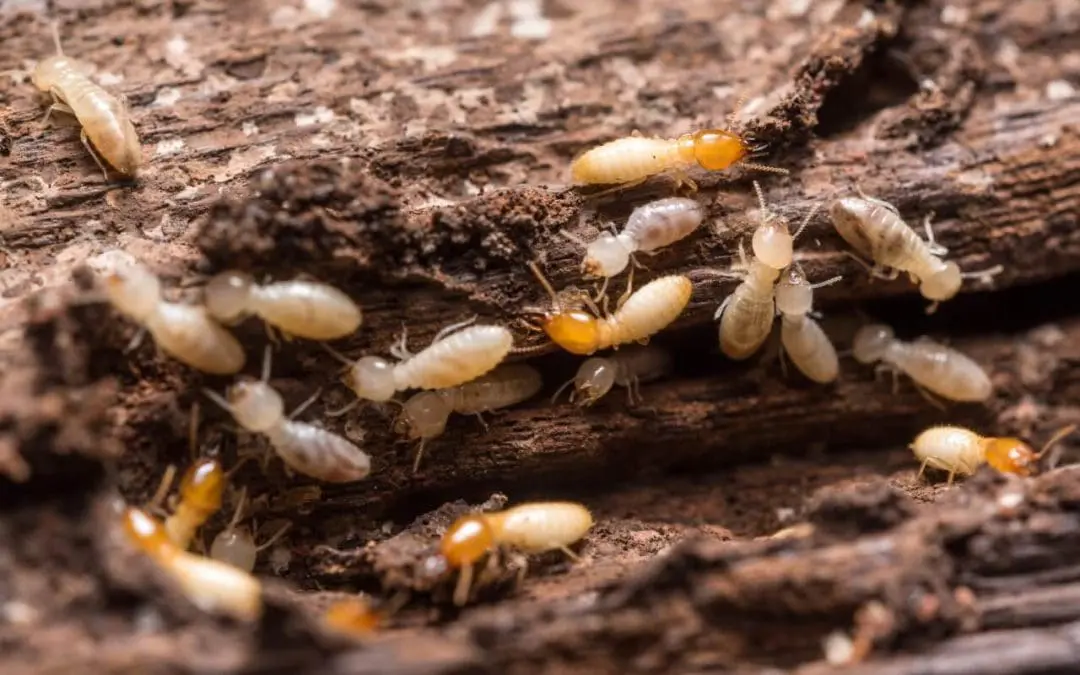Termites can be silent invaders, slowly damaging your home’s structure before you realize they’re there. Understanding the signs of termites is crucial for early detection and prevention. Here’s how to spot these wood-destroying pests before they cause significant damage.
Visual Evidence of Termite Damage
One of the most common signs of termite activity is damage to wooden structures in your home. Check for wood that sounds hollow when tapped. Termites consume wood from the inside out, leaving a thin veneer of wood that can easily be broken with a knock. If you notice areas where the wood is weak or crumbling, termites might be the cause.
Mud Tubes on Exterior Walls are Sure Signs of Termites
Termites build mud tubes to travel between their nests and feeding areas. These tubes are often found on the exterior walls of your home, especially in areas close to the ground. They are about the width of a pencil and can appear as small, cylindrical structures. Their presence indicates that termites actively use these tubes to access wood in your home.
Swarms and Termite Wings
During certain times of the year, usually in the spring, termites will swarm to reproduce and establish new colonies. You might notice discarded wings around your home, particularly near windowsills or doors. These wings indicate that a swarm of termites has been in your area. Finding piles of wings is a sure sign of a termite infestation.
Cracked or Bubbling Paint can be Signs of Termites
Termite damage can sometimes cause paint or varnish to crack or bubble. If you see these signs on wooden surfaces, it could be due to termites tunneling underneath the paint. This occurs because the tunnels created by termites create pressure that causes the paint to peel or bubble.
Hollow Sounds in Wood
Listening carefully to wooden parts of your home can provide clues about termite activity. Knock on wooden surfaces such as beams, floors, or furniture. If the sound is hollow, it suggests that termites have been eating away the wood. This detection method can be especially useful in areas where visual damage is not yet apparent.
Seeing Termite Droppings
Termites produce droppings, known as frass, which look like tiny pellets or sawdust. These droppings are often found near infested wood or in areas where termites have been active. Frass can vary in color, depending on the type of wood termites have been consuming. Discovering frass around your home is a clear indication of a termite problem.
Muddy or Darkened Areas on Wood are Signs of Termites
Termites often create muddy or darkened areas on wood surfaces. This is due to the combination of soil and termite droppings accumulating as they tunnel through wood. These areas may look different from the surrounding wood and sometimes appear damp or discolored.
Detecting termites early can save you from extensive damage and costly repairs. By being vigilant and watching for these signs, you can address termite infestations before they become devastating. If you suspect you have termites in your home, consulting a professional pest control service is essential for accurate identification and effective treatment. Prompt action is the best way to protect your home from these destructive pests.
FAQ
What should I do if I find signs of termites?
If you find signs of termites, contact a pest control professional immediately. They can thoroughly inspect and recommend the best treatment options to address the infestation and prevent future problems.
How can I prevent termites from entering my home?
To prevent termites, keep the wood and soil around your home dry. Remove any wood in contact with the soil and seal any cracks or openings in your home’s foundation. Regular inspections by a pest control professional can also help detect and prevent termite infestations early.
Can termites be treated without professional help?
While some minor termite issues might be addressed with over-the-counter treatments, professional help is often necessary for comprehensive and effective termite control. Pest control professionals have access to advanced treatments and techniques to thoroughly eradicate termites.
Can termites damage parts of my home other than wood?
Yes, termites primarily feed on wood, but they can also damage other materials indirectly. For example, termites can chew through drywall and insulation as they search for wood and shelter. Additionally, they can cause structural problems by weakening wooden supports, which may affect the stability of other parts of your home.
Reliable Real Estate Inspections provides home inspections for buyers and sellers. Contact us to request our services.

